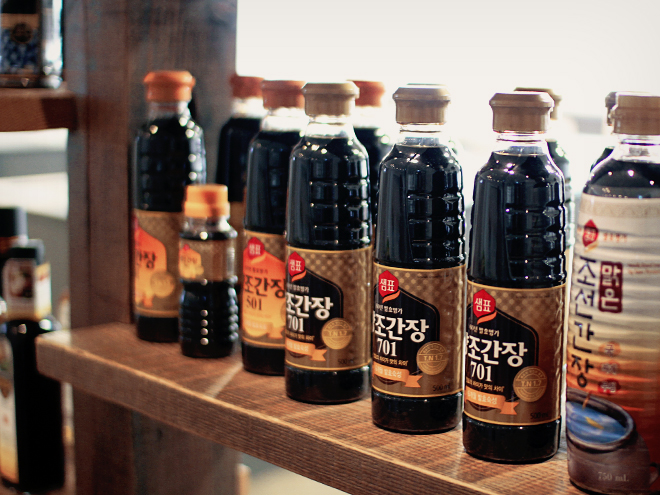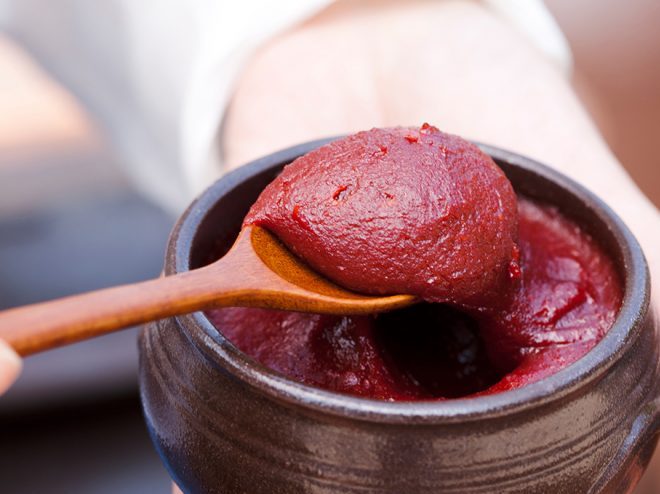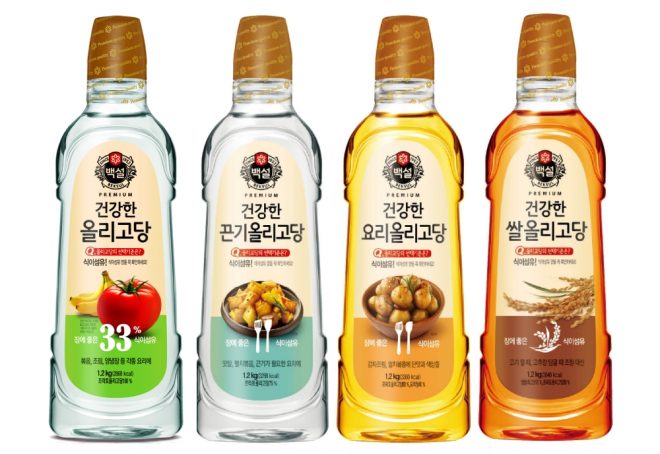Many who just stepped into the world of Korean cuisine at home feel lost, unable to distinguish the essential ingredients from the rest of them. Not only do their names sound unfamiliar (what is gochugaru? Is it different from gochujang?), but each ingredient often comes in several varieties (how is guk-ganjang different from jin-ganjang?).
To save you from wasting money on the ingredients you won’t use more than once or twice, we’ve come up a list of essential pantry items you’d need to cook some of the popular Korean dishes.
1. Soy Sauce (Ganjang)

Buying a Korean soy sauce is slightly trickier than buying a Kikkoman. There are roughly three kinds of soy sauce popularly used in Korean food – guk-ganjang, jin-ganjang, and yangjo-ganjang.
While guk-ganjang is used in nearly any kind of dishes using broth like guk and jjigae, the latter two kinds are more appropriate for dishes without much water. Because jin-ganjang uses chemical formula, its taste won’t change much when heated. So use jin-ganjang for hot dishes and yangjo-ganjang for cold dishes. Yangjo-ganjang, which is naturally fermented using microorganisms and salt water, is commonly used to make sauces for its unique scent.
For beginners, jin-ganjang will do for now.
2. Red Chili Paste (Gochujang) and Red Chili Flakes (Gochugaru)

Of course, we can’t discuss Korean food without mentioning its spiciness. Gochujang, which is a paste made with chili flakes, soy paste, and other ingredients, has saltier and sweeter taste. On the other hand, gochugaru highlights only the spiciness of the chili. In most “red” Korean dishes, gochujang and gochugaru are used together to balance the taste, so both are pretty much essential.
3. Sesame Oil (Chamgireum)
Sesame oil can be handy if you want to improve both taste and the smell of your Korean dish with a final touch. However, its distinctive scent can be a double-edged sword so use it only when the direction says so (unless you want all your dishes smell the same).
4. Rice Vinegar (Shikcho)
You will encounter with this ingredient more frequently than you think and you CAN’T replace it with the balsamic vinegar you have. It’s usually used in banchan and sauces.
5. Oligosaccharide Syrup (Oligodang)

Although you can use corn syrup, which is sweeter and stickier, we recommend using oligodang for your health. Oligodang is used at the final step of cooking to give sweetness and texture at the same time. Just like gochujang and gochugaru, oligodang and sugar are used together to complement each other.
By Heewon Kim




